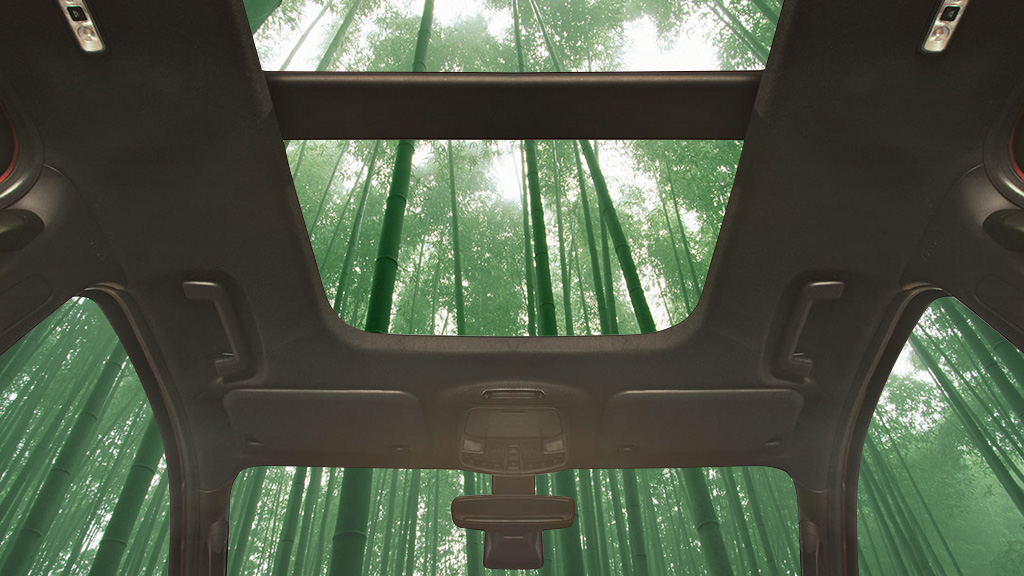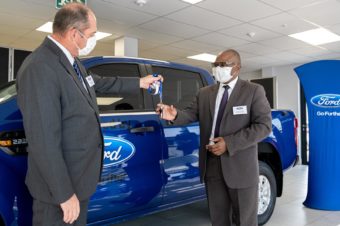
What’s Super Strong, Fast Growing, and Potentially Part of Your Next Car? Bamboo!
You’ve probably sat on it, built with it, and maybe even eaten it, but did you know that your car could be next to benefit from bamboo – one of the world’s strongest natural materials?
While investment in research has led to breakthroughs in new materials like super strong carbon fiber and lightweight aluminum, nature’s wonder material may have been growing all along and as much as three feet in a day. Soon, some surfaces inside our vehicles could be made from a combination of bamboo and plastic to create super hard material.
“Bamboo is amazing,” said Janet Yin, a materials engineering supervisor at Ford’s Nanjing Research & Engineering Centre. “It’s strong, flexible, totally renewable, and plentiful in China and many other parts of Asia.”
The benefits of bamboo have been recognized for more than a century – Thomas Edison even experimented with it when making the first light bulb. In building, its tensile strength (or how much it can resist being pulled apart) is well known, as it can rival or even better some types of metal. And, because it grows to full maturity in just two to five years – compared to up to decades for other trees – bamboo also regenerates easily.
Over the past several years, Ford worked with suppliers to evaluate the viability of using bamboo in vehicle interiors and to make extra strong parts by combining it with plastic. The team has found that bamboo performs comprehensively better than other tested synthetic and natural fibers in a range of materials tests, from tensile strength tests to impact strength tests. It’s also been heated to more than 212 degrees Fahrenheit to ensure it can maintain its integrity.
The sustainable journey
While tests on bamboo continue, Ford is already making use of sustainable and recycled materials. The company recently
announced it is working with Jose Cuervo® to explore the use of the tequila producer’s agave plant byproduct to develop more sustainable bioplastics to employ in Ford vehicles.
Ford uses several sustainable materials including:
- Kenaf, a tropical plant in the cotton family, is used in the door bolsters of Ford Escape
- REPREVEfabric,madefromrecycledplasticbottles,diverts more than 5 million plastic bottles from landfill annually. Ford most recently introduced REPREVE in F-150
- Post-consumer cotton from denim and T-shirts is used as interior padding and sound insulation in most Ford vehicles
- EcoLon post-consumer nylon carpeting is used as cylinderhead covers in Ford Escape, Fusion, Mustang and F-150
- Recycled plastic bottles are becoming floor carpeting, wheel liners and shields in several vehicles including FordTransit and C-MAX
- Recycledpost-consumertiresareusedinsealsandgaskets
- Rice hulls are used to reinforce plastic in Ford F-150electrical harness
- Soy-basedfoamsareusedasseatcushions,seatbacksandhead restraints in Ford’s North American vehicle lineup
- Wheat straw is used in Ford Flex to reinforce storage bins
- Cellulose tree fibers are used in the armrest of LincolnMKX. Used to replace glass-filled plastic, this industry-first material weighs 10 percent less, is produced 30 percent faster, and reduces carbon emissions




1 Response
Montshiwa Boyce Reuben Kupiso
January 21, 2021Ford ranger is a very good 4×4 tough bakkie on road, good speed ,balancing , as a 4×4 not bad on the road also good in cruising running like sedan car other’s cannot match it even , is the truck i wish to have in my life time .kind regards